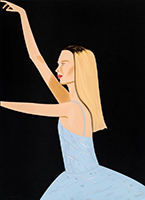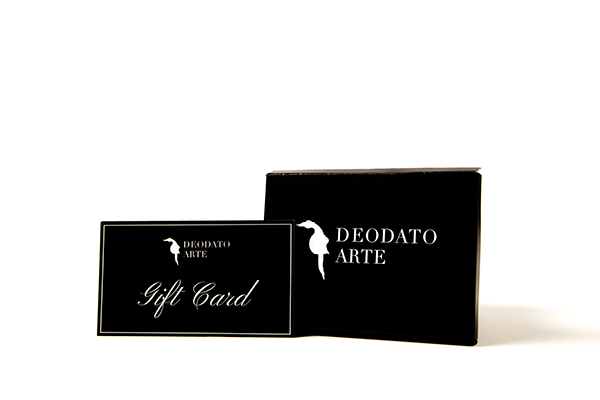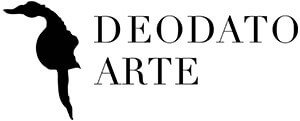
Thank you!

Ai Weiwei
Ai Weiwei: Biography of the Chinese Artist and Activist
The Chinese designer, architect, movie director, activist and artist Ai Weiwei, born in Beijing in 1957, is one of the most talked about and looked upon contemporary artists of our century.
The artist has entirely dedicated – and continues to do so – his life to art, which he has used as a social means for human rights.
After graduating from the Academy of Cinema and dedicating himself entirely to the painting, he founded in the Seventies, , the artistic group Stars, together with other artists.
The group is characterized by a departure from the traditional styles and canons imposed by official Chinese art still influenced by Soviet Socialist Realism.

These foundation of this group marked the artist’s first steps towards conceptual art.
In the following decade the Chinese authorities in Beijing allowed the group to set up an exhibition; it was the first exhibition of contemporary art in China and therefore it attracted many visitors.
At the beginning of the 1980s Ai Weiwei moved to New York where he married Lu Qing, who also an artist. He continued his artistic activity, producing his largest production, attending the most prestigious design schools. In the Big Apple, Ai Weiwei exhibited his work for the first time in a solo show at the Ethan Cohen Gallery.
In 1993 the artist returned to China due to the illness of his elderly father; during his stay in his native country he collaborated with a community of avant-garde artists and in 1997 he co-founded the Chinese Arts Archive (CAAW) of which he became its director.
In 1999 Ai Weiwei started focusing on Architecture and founded his first studio on the outskirts of Beijing, that he named “FAKE Design“. Ai Weiwei worked on numerous projects with various international architects, also winning competitions.
After a catastrophic earthquake in the center of China in Sichuan that claimed around 70,000 lives, including many students who lost their lives under the rubble of the schools, Ai Weiwei accuses the Chinese government’s regime of being responsible for the construction of buildings using poor materials, publishing the names of the five thousand dead children on his blog as a tribute to the victims and their families.
Because of his activism, Ai Weiwei saw his blog closed down in 2009 by the authorities, and only a year later, the Shanghai City Council ruled that his Beijing studio should be closed and demolished; from these events his life will change forever.
The activist artist was imprisoned in a secretly located prison for 81 days, from April 2 to June 22, 2011, on charges of opposing the Chinese political regime. The news caused a worldwide sensation and it was spread by all media.
During these months, some of the world’s leading museums, including the Tate Modern Gallery in London, launched an online petition for Ai Weiwei to be released and for free expression of thought that is punishable in China.
The Italian Pulitzer Association also intervenes and collects five thousand signatures for the release of the artist from prison.
In addition, the Association publicly asks the President of the Italian Republic to intervene and mediate with the authorities in Beijing for the release of the artist.
Ai Weiwei is granted the visit of his wife with a private interview and in the presence of the prison guards; afterwards the woman reassures the public opinion about her husband’s condition, stable and healthy.
On 22 June, after the Prime Minister of China’s trip to Europe, the artist is released on bail; from this moment Ai Weiwei is on probation and unable to leave the country until 2015, when his passport is returned.
However, the lawsuits do not seem to be settling: the artist is accused of tax evasion and fined a sum of 12 million yuan. As a support and sign of participation, his supporters raise 1.37 million dollars, almost reaching the total amount.
The works of art, architecture, design and cinema of a versatile artist like Ai Weiwei are the product of a life full of facets and love and coherence.
His activism features in his private life but also in his entire artistic production, exhibitions and projects he created throughout his career. His art and his actions distinguished and marked him forever, both as a worthy artist and as a man of honour.
Political Art: Ai Weiwei and his Works and Exhibitions of Conceptual Art
Ai Weiwei is an artist who manages to bring life into art and art into people’s lives thanks to his conceptual art and political art.
The artist’s production counts numerous works and installations, which investigate the deep link that exists between art and society, in a subtle but eloquent way.
His first works of his youth were about painting, a great technical-artistic exercise that allowed him to develop that sensibility that is transformed over time.
Between the Eighties and Nineties his first works appeared, marking the transition from traditional and academic art to a more personal philosophy and conceptual art.
This was the period in which he produced Profile Of Duchamp (1985), a tribute to the founder of Dadaism, Han Dinasty Urn With Coca Cola Logo (1994), a crossover between ancient art and pop art, and Dropping A Han Dinasty Urn (1995), a sequence of three photographs that make fun of the importance – but what is the real importance? – of museum art.
In these years he also wrote a series of three books such as The Black Cover Book (1994), The White Cover Book (1995) and The Grey Cover Book (1997) dedicated to contemporary art.
After his return to China Ai Weiwei created Forever (2003), a splendid conceptual art sculpture made with bicycles of the most famous Chinese brand. From this moment on, Forever bicycles became the best-selling bicycles in China.
In addition, the artist also created the sculptural work Map Of China (2007) dedicated to his country, shaped with fragments of wood from the Qing period and its temples, destroyed by the regime.
Ai Weiwei, thanks to his worldwide fame as an artist, becomes the protagonist in 2007 of the illustrious Documenta exhibition in Kassel, which recognizes his prestige, his intelligence and his value.
Works by Ai Weiwei - Sunflower Seeds
The earthquake in Sichuan in 2008 and his stance against the regime, held by him responsible for thousands of victims, mark a watershed that reflects in the themes of his art, which are directed towards the issue of human rights, freedom of expression and Chinese political and mental closure.
The Tate Modern Gallery in London, as a sign of support for the artist during the troubled period, dedicates between 2010 and 2011 the installation Sunflower Seeds, a voluminous composition of 100 million sunflower seeds occupying 1000 square meters, exhibited in various museums around the world since 2009.
Through the millions of Sunflower seeds Ai Weiwei represents a strong criticism of Chinese mass production techniques that exploit workers, symbolizing both the territorial extension of China and its tendency to standardize and suppress people’s individuality.

In 2012 Ai Weiwei exhibited at the Pérez Art Museum in Miami: here the artist’s artistic materials such as photographs and sculptures are collected, suggesting an irreverent nature and using new and unusual media.
In the same year the largest exhibition of videos and photographs by the artist Interlacing was held in Paris: the exhibition aimed to document the everyday reality of Chinese society, investigating how media like Twitter can be influential.
One of the most impressive sculptural works created after his imprisonment is surely S.A.C.R.E.D.
Made in 2013 and built with dioramas inside parallelepipeds that recreated the alienating environment of the prison, this sculpture wants to evoke that characteristic of art that knows how to go beyond its limits creating a particular suggestion.
Ai Weiwei‘s art also features in Berlin in 2014 with Evidence, a film that aims to be a tribute to the conceptual art of this artist who is actively committed to a democratic artistic and social policy, but above all intellectual.
Ai Weiwei - Lego
2014 is also the year in which the artist creates, thanks to the only use of LEGO bricks, a huge work depicting 176 characters more or less known, who were politically persecuted.
But when the artist asks the Lego company for more bricks to perfect the work, the company denies them so as not to be involved in matters of political motivation.
Ai Weiwei, an eclectic artist with a great passion for Duchamp, posts a photo of the bricks thrown into a toilet; the issue becomes so morally relevant that Lego has no choice but to give up the ban and provide the artist with the necessary bricks.

Exhibition Ai Weiwei - Palazzo Strozzi, Palazzo Te and now the Deodato Arte Gallery
Ai Weiwei has also worked on numerous projects in Italy, a country that is very close to him and that supported him during the darkest period.
In 2008 he had a solo exhibition at Palazzo Strozzi with some artworks such as Snake Bag, a huge snake made up of school backpacks sewn together, and Rebar And Case, recalling the coffins of children who died in the earthquake.
An exhibition that is a tribute to the misfortune of children victims of the earthquake and neglected by the Chinese government.
In 2016, once again in Palazzo Strozzi Ai Weiwei built the temporary façade in a work entitled Reframe, using 22 orange life rafts: a strong denunciation of the conditions of the refugees and an invitation to reflect on the reception and rescue aid.
The theme of immigration can also be addressed through art and culture.

In 2015 Ai Weiwei exhibited his works at Palazzo Te in Mantua and, as he had also done for Han Dinasty Urn With Coca Cola Logo, thus creating a link between tradition and modernity, addressing the urgent topics of freedom and human rights. The exhibition is a journey through 46 unpublished works that compare with the Italian Renaissance in one of the most classical Italian palaces.
The Artist Ai Weiwei – Preview Works of the Deodato Arte Gallery in Milan
Ai Weiwei, the most actively engaged artist in social issues, will soon be available on our e-commerce site deodato.com and at our gallery in Milan.
To know in advance which works of Ai Weiwei will be on display at the Deodato Arte Gallery and to receive photos and information kindly contact us by sending an e-mail to [email protected].











 Register
Register Wishlist
Wishlist Contact Us
Contact Us